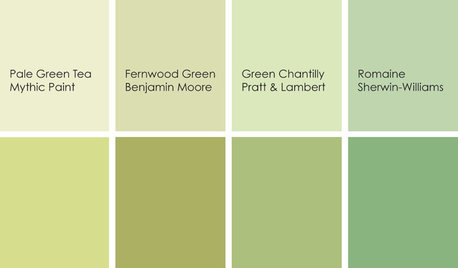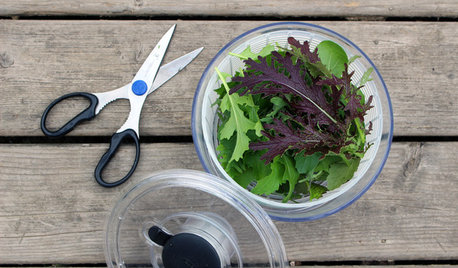When to aerate with Bermuda?
Bobby_S
10 years ago
Related Stories

KITCHEN DESIGNCooking With Color: When to Use Green in the Kitchen
Consider a taste of Romaine or Pale Green Tea to make your kitchen walls or cabinets the freshest ones around
Full Story
GARDENING FOR BUTTERFLIESGardening for the Bees, and Why It’s a Good Thing
When you discover how hard bees work for our food supply, you may never garden without them in mind again
Full Story
GARDENING GUIDESEssential Watering Tips for Your Edible Garden
To give your edible plants just what they need, check out these guidelines for how, when and how much to water
Full Story
HOUSEKEEPINGHow to Keep the Sparkle in Your Mirrored Furniture
Your romance with mirrored pieces doesn't have to fade over time, when you schedule regular dates to fight fingerprints, dust and flaws
Full Story
LANDSCAPE DESIGNGet Along With Less Lawn — Ideas to Save Water and Effort
Ditch the mower and lower your water bill while creating a feast for the eyes with diverse plantings and gathering places
Full Story
DECORATING GUIDESYour Décor: Put a Monogram on It
15 ways to leave your initials around the house
Full Story
EDIBLE GARDENSNatural Ways to Get Rid of Weeds in Your Garden
Use these techniques to help prevent the spread of weeds and to learn about your soil
Full Story
GARDENING GUIDESGarden Myths to Debunk as You Dig This Fall and Rest Over Winter
Termites hate wood mulch, don’t amend soil for trees, avoid gravel in planters — and more nuggets of garden wisdom
Full Story
FARM YOUR YARDThe 8 Tools That Help Bring the Farm to Your Table
Vegetable gardeners get a big assist from these essential helpers
Full Story
SHOP HOUZZHouzz Products: Innovative Things to Make You Say, ‘Wow’
Meet the problem solvers, the delightful finds and other models of great, creative design
Full StoryMore Discussions








dchall_san_antonio
Bobby_SOriginal Author
Related Professionals
70037 Landscape Architects & Landscape Designers · Port Royal Landscape Architects & Landscape Designers · Seabrook Landscape Architects & Landscape Designers · Waunakee Landscape Architects & Landscape Designers · Manchester Landscape Contractors · Kettering Landscape Contractors · Mequon Landscape Contractors · Mount Kisco Landscape Contractors · North Canton Landscape Contractors · Ocoee Landscape Contractors · Overland Park Landscape Contractors · Royal Oak Landscape Contractors · Whitehall Landscape Contractors · Clearfield Landscape Contractors · Visalia Swimming Pool Buildersdchall_san_antonio
tnjdm